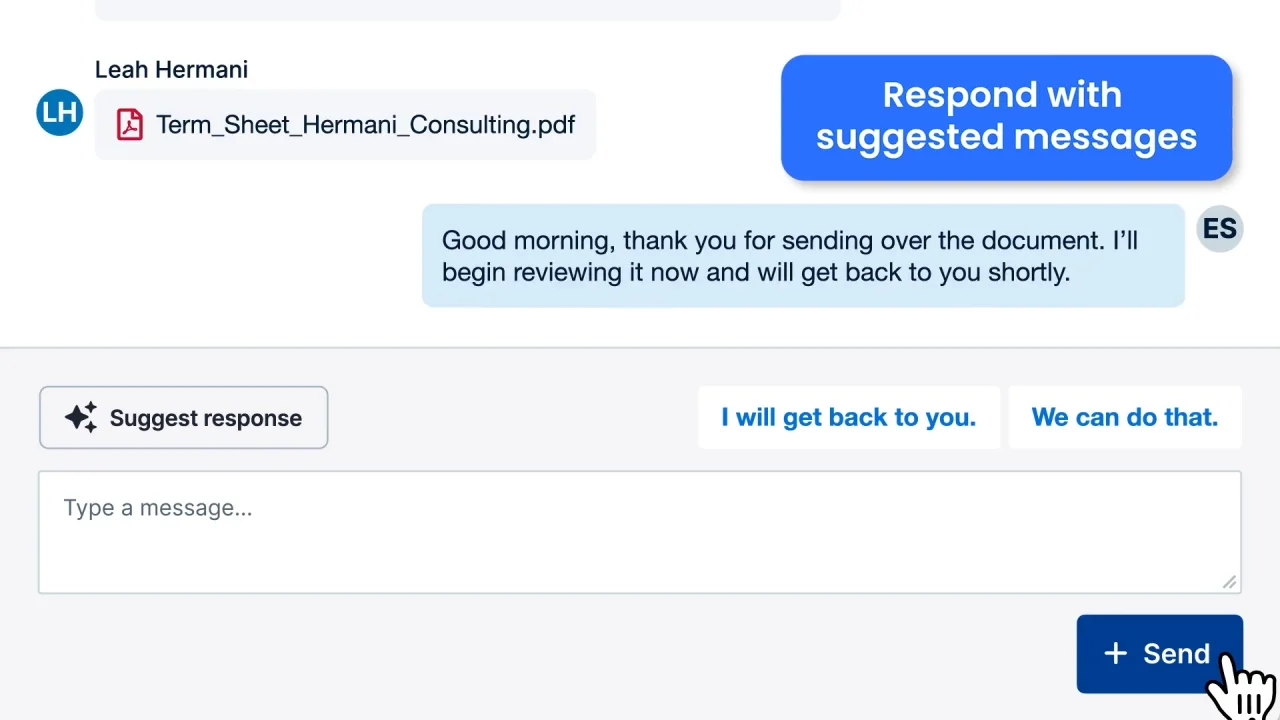
Clio Duo: Complete Buyer's Guide
Integrated AI approach to legal time tracking
Clio Duo represents the integrated AI approach to legal time tracking, embedding automated billing recommendations and time entry suggestions directly within the established Clio Manage practice management ecosystem. Rather than requiring firms to adopt yet another standalone tool, Clio Duo enhances existing workflows for the thousands of law practices already committed to the Clio platform [143].
Market Position & Maturity
Market Standing
Clio Duo benefits from the established market leadership of its parent platform, with Clio serving over 150,000 legal professionals globally and maintaining dominant market share in cloud-based legal practice management.
Company Maturity
The vendor's market maturity reflects Clio's decade-plus presence in legal technology, with substantial customer base, proven operational scale, and comprehensive support infrastructure.
Growth Trajectory
Growth trajectory indicators suggest continued investment in AI capabilities, with Clio's broader product roadmap emphasizing automation and intelligent workflow enhancement.
Industry Recognition
Industry recognition includes consistent placement in legal technology awards and analyst reports, though specific recognition for AI time tracking capabilities remains limited compared to Clio's broader practice management achievements.
Strategic Partnerships
Strategic partnerships within the legal technology ecosystem strengthen market position, though specific alliances supporting AI development or competitive differentiation are not extensively documented in available research.
Longevity Assessment
Clio's established market presence provides stability advantages over newer AI time tracking entrants, offering buyer confidence in ongoing development support and platform longevity.
Proof of Capabilities
Customer Evidence
Customer evidence for Clio Duo remains primarily vendor-sourced without extensive independent validation, creating verification challenges for comprehensive capability assessment.
Quantified Outcomes
Quantified performance claims center on the reported 3-5 hours weekly time savings [143], representing substantial administrative efficiency gains if validated across diverse implementation scenarios.
Case Study Analysis
Available case studies suggest positive implementation experiences among existing Clio Manage users, though detailed customer attribution and specific outcome metrics require direct vendor inquiry [143].
Market Validation
Market validation through customer growth and platform expansion indicates positive reception, though specific metrics distinguishing Duo adoption from broader Clio Manage growth are not detailed.
Competitive Wins
Competitive displacement evidence is limited, with most customer examples reflecting enhancement of existing Clio workflows rather than replacement of alternative time tracking solutions.
Reference Customers
Reference customer availability requires direct vendor engagement, as publicly disclosed implementation details and customer testimonials are not extensively available through independent research channels.
AI Technology
Clio Duo's AI foundation centers on activity pattern recognition and automated billing recommendation generation integrated directly within the Clio Manage environment [143].
Architecture
The native integration architecture represents Clio Duo's primary technical differentiator, embedding AI capabilities directly within existing Clio workflows [143].
Primary Competitors
Primary competitors include standalone AI time tracking solutions like Ajax [104][111], MagicTime [8-11][25], and WiseTime [107][113].
Competitive Advantages
Competitive advantages center on native integration depth and workflow simplicity for existing Clio users [143].
Market Positioning
Market positioning reflects Clio's strategy of evolutionary enhancement rather than revolutionary AI capabilities.
Win/Loss Scenarios
Win scenarios favor existing Clio users prioritizing workflow simplicity and integration depth over advanced AI capabilities.
Key Features

Pros & Cons
Use Cases
Featured In Articles
Comprehensive analysis of AI Voice-to-Time Entry for Legal/Law Firm AI Tools for Legal/Law Firm AI Tools professionals. Expert evaluation of features, pricing, and implementation.
How We Researched This Guide
About This Guide: This comprehensive analysis is based on extensive competitive intelligence and real-world implementation data from leading AI vendors. StayModern updates this guide quarterly to reflect market developments and vendor performance changes.
119+ verified sources per analysis including official documentation, customer reviews, analyst reports, and industry publications.
- • Vendor documentation & whitepapers
- • Customer testimonials & case studies
- • Third-party analyst assessments
- • Industry benchmarking reports
Standardized assessment framework across 8 key dimensions for objective comparison.
- • Technology capabilities & architecture
- • Market position & customer evidence
- • Implementation experience & support
- • Pricing value & competitive position
Research is refreshed every 90 days to capture market changes and new vendor capabilities.
- • New product releases & features
- • Market positioning changes
- • Customer feedback integration
- • Competitive landscape shifts
Every claim is source-linked with direct citations to original materials for verification.
- • Clickable citation links
- • Original source attribution
- • Date stamps for currency
- • Quality score validation
Analysis follows systematic research protocols with consistent evaluation frameworks.
- • Standardized assessment criteria
- • Multi-source verification process
- • Consistent evaluation methodology
- • Quality assurance protocols
Buyer-focused analysis with transparent methodology and factual accuracy commitment.
- • Objective comparative analysis
- • Transparent research methodology
- • Factual accuracy commitment
- • Continuous quality improvement
Quality Commitment: If you find any inaccuracies in our analysis on this page, please contact us at research@staymodern.ai. We're committed to maintaining the highest standards of research integrity and will investigate and correct any issues promptly.